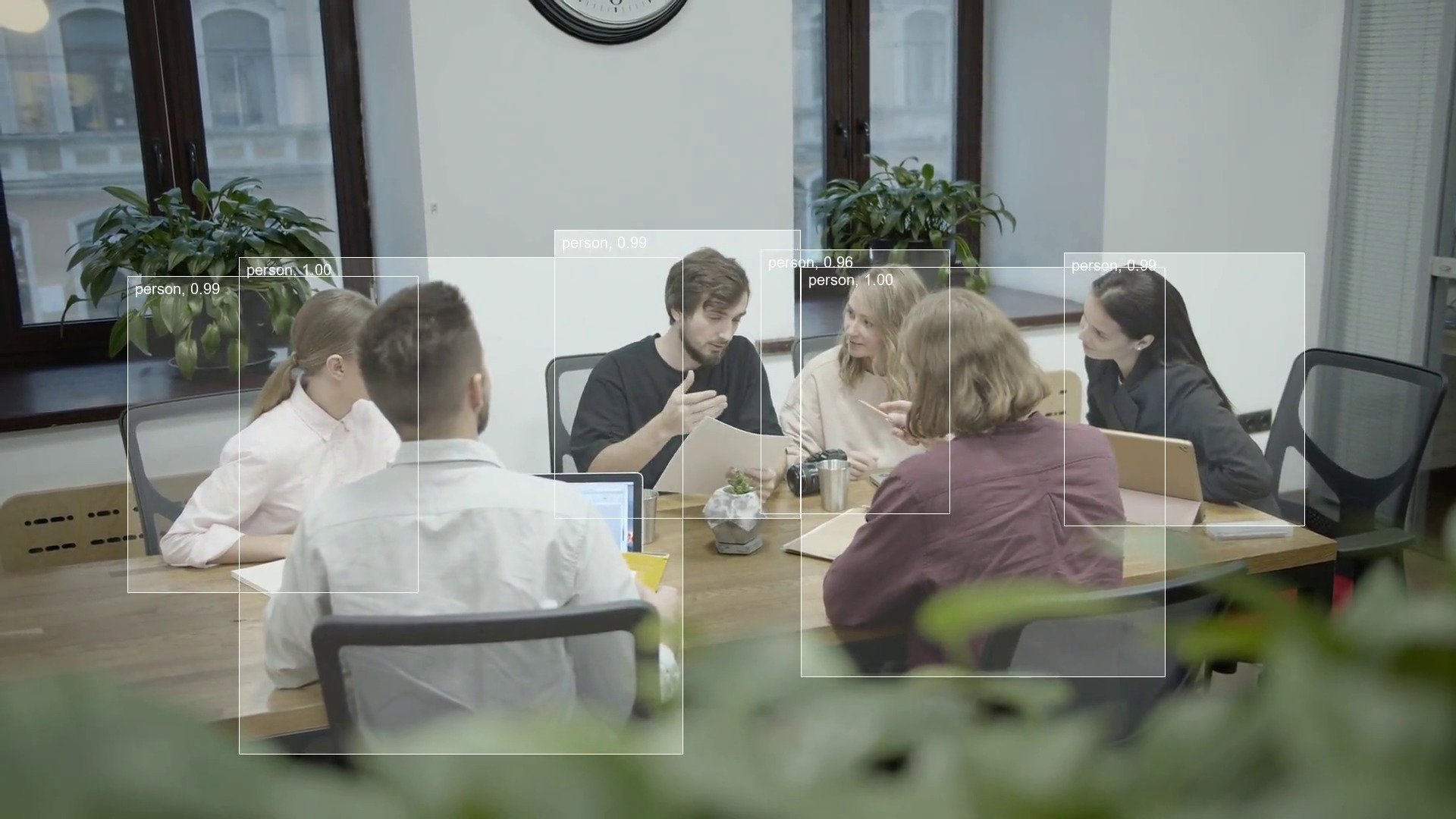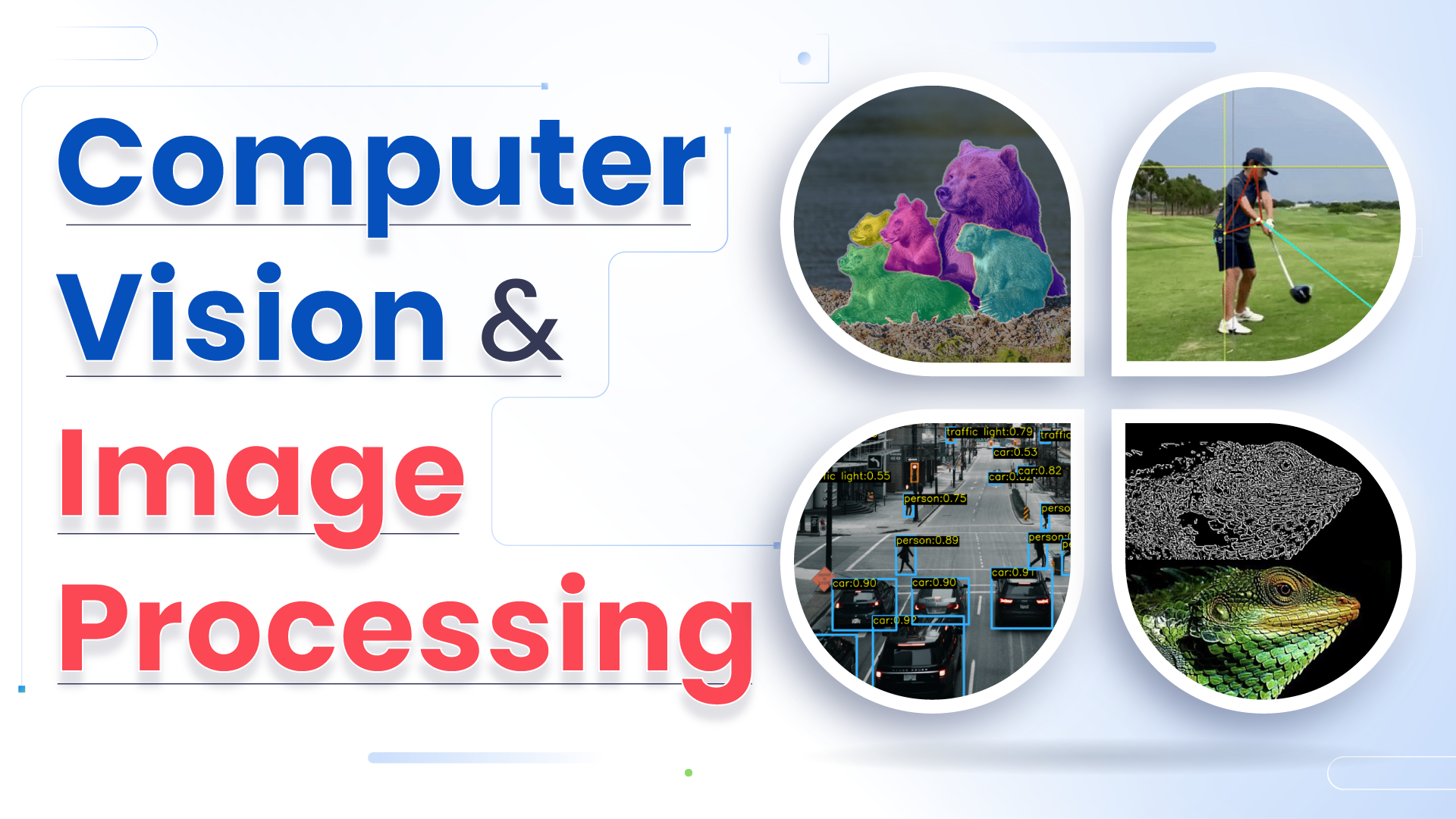Learn Image Processing & Object Recognition: Beginners Guide
Learn the basics of image processing and object recognition, explore available resources, and discover the best path to mastering these transformative technologies.
Learn the basics of image processing and object recognition, explore available resources, and discover the best path to mastering these transformative technologies.
Embarking on a journey into the world of computer vision and industrial automation opens up a realm of possibilities for innovation. This roadmap will guide you through the essential steps to acquire the knowledge and skills necessary to excel in these transformative fields.
Start with the basics: Learn about linear algebra, calculus, probability, and statistics. These are the foundations of many image processing and machine learning algorithms.
import numpy as npDive into image processing: Understand how images are represented digitally and learn about basic operations like filtering, edge detection, and segmentation.
from PIL import Image
image = Image.open("image.jpg")Explore computer vision: Learn about object detection, image classification, and tracking. Libraries like OpenCV provide tools for these tasks.
import cv2
gray = cv2.cvtColor(image, cv2.COLOR_BGR2GRAY)Embrace deep learning: Deep learning has revolutionized computer vision. Study neural networks, especially convolutional neural networks (CNNs), for image-related tasks.
from tensorflow.keras.models import Sequential
model = Sequential()Leverage cloud platforms: Platforms like Azure AI Vision and Google Cloud Vision AI offer pre-trained models and APIs for various computer vision tasks.
from azure.cognitiveservices.vision.computervision import ComputerVisionClientPractice with projects: Apply your knowledge by building projects. Start with simple tasks like recognizing objects in images and gradually increase complexity.
# Train a model to recognize cats and dogs
model.fit(training_images, training_labels, epochs=10)Explore industrial automation: Once you have a good grasp of computer vision, start learning about industrial automation concepts like PLC programming and robotics.
# Control a robotic arm based on image analysis
if object_detected:
robot_arm.move_to(object_coordinates)Combine your knowledge: Integrate your computer vision skills with industrial automation systems to create intelligent applications.
# Use computer vision to inspect products on a production line
defects = inspect_product(image)
if defects:
# Trigger an alertRemember, this is an iterative process. Continuously learn, practice, and stay updated with the latest advancements in both fields.
This Python code demonstrates a step-by-step guide to getting started with computer vision, starting from basic image manipulation with NumPy and PIL to more advanced topics like computer vision tasks using OpenCV, deep learning with TensorFlow, and cloud platform integration with Azure AI Vision. It includes examples of image processing, edge detection, building a CNN for image classification, analyzing image content using Azure, and training a model to classify handwritten digits. The code also provides conceptual examples of industrial automation integration, such as controlling a robotic arm based on object detection and using computer vision for quality control.
# 1. Start with the basics:
import numpy as np
# Example: Create a numpy array representing an image
image_array = np.array([[0, 255, 0], [0, 255, 0], [0, 255, 0]])
# 2. Dive into image processing:
from PIL import Image
image = Image.open("image.jpg")
# Example: Convert image to grayscale
gray_image = image.convert('L')
gray_image.save("gray_image.jpg")
# 3. Explore computer vision:
import cv2
# Example: Detect edges in an image
image = cv2.imread("image.jpg")
edges = cv2.Canny(image, 100, 200)
cv2.imwrite("edges.jpg", edges)
# 4. Embrace deep learning:
from tensorflow.keras.models import Sequential
from tensorflow.keras.layers import Conv2D, MaxPooling2D, Flatten, Dense
# Example: Build a simple CNN for image classification
model = Sequential()
model.add(Conv2D(32, (3, 3), activation='relu', input_shape=(64, 64, 3)))
model.add(MaxPooling2D((2, 2)))
model.add(Flatten())
model.add(Dense(10, activation='softmax'))
model.compile(optimizer='adam', loss='categorical_crossentropy', metrics=['accuracy'])
# 5. Leverage cloud platforms:
# This requires setting up API keys and specific SDK installations.
# Refer to platform documentation for detailed instructions.
# Example (Azure AI Vision): Analyze image content
from azure.cognitiveservices.vision.computervision import ComputerVisionClient
# Authenticate with your Azure AI Vision subscription key
client = ComputerVisionClient(endpoint, CognitiveServicesCredentials(subscription_key))
# Analyze image from URL
image_url = 'https://example.com/image.jpg'
analysis = client.analyze_image(image_url, visual_features=['Description'])
print(analysis.description.captions[0].text)
# 6. Practice with projects:
# Example: Train a simple model to classify handwritten digits using MNIST dataset
from tensorflow.keras.datasets import mnist
(x_train, y_train), (x_test, y_test) = mnist.load_data()
x_train = x_train.astype('float32') / 255
x_test = x_test.astype('float32') / 255
y_train = to_categorical(y_train, num_classes=10)
y_test = to_categorical(y_test, num_classes=10)
model.fit(x_train, y_train, epochs=5)
loss, accuracy = model.evaluate(x_test, y_test)
print('Test accuracy:', accuracy)
# 7. Explore industrial automation:
# This requires specific hardware and software setups.
# Refer to robotics and PLC programming resources for practical examples.
# Example (Conceptual): Control a robotic arm based on object detection
if object_detected:
robot_arm.move_to(object_coordinates)
# 8. Combine your knowledge:
# Example (Conceptual): Use computer vision for quality control
defects = inspect_product(image)
if defects:
# Trigger an alert or stop the production lineThis code provides a more practical and illustrative example for each step, covering basic image manipulation, computer vision tasks, deep learning implementation, and conceptual examples for industrial automation integration. Remember to install necessary libraries and adapt the code based on your specific project requirements and chosen platforms.
General:
1. Start with the basics:
2. Dive into image processing:
3. Explore computer vision:
4. Embrace deep learning:
5. Leverage cloud platforms:
6. Practice with projects:
7. Explore industrial automation:
8. Combine your knowledge:
This article provides a roadmap for learning the skills needed to build intelligent industrial automation systems using computer vision.
1. Laying the Foundation:
2. Mastering Image Manipulation:
3. Entering the World of Computer Vision:
4. Harnessing the Power of Deep Learning:
5. Utilizing Cloud-Based Solutions:
6. Building Practical Experience:
7. Bridging the Gap with Industrial Automation:
8. Creating Intelligent Applications:
This roadmap emphasizes continuous learning and practice. Stay updated with the latest advancements in both computer vision and industrial automation to remain at the forefront of this exciting field.
By mastering the fundamentals of image processing, delving into the capabilities of computer vision, and harnessing the power of deep learning, you can develop intelligent systems that can perceive and interpret the visual world. Integrating these skills with industrial automation opens up a world of opportunities for innovation, leading to smarter, more efficient, and safer industrial processes. As you embark on this journey, remember that continuous learning and hands-on experimentation are crucial for staying ahead in these rapidly evolving fields. The future of industry lies in the seamless integration of human ingenuity and intelligent automation, and by mastering these technologies, you can be at the forefront of this exciting revolution.
 Azure AI Vision with OCR and AI | Microsoft Azure | Accelerate computer vision development with Microsoft Azure. Get insights from image and video content using OCR, object detection, and image analysis.
Azure AI Vision with OCR and AI | Microsoft Azure | Accelerate computer vision development with Microsoft Azure. Get insights from image and video content using OCR, object detection, and image analysis. Is deep learning killing image processing/computer vision? - Quora | Dec 18, 2019 ... What are the best ways to start learning computer vision for a beginner who does not know image processing? Here is my advice:.
Is deep learning killing image processing/computer vision? - Quora | Dec 18, 2019 ... What are the best ways to start learning computer vision for a beginner who does not know image processing? Here is my advice:. Object Detection: The Definitive 2025 Guide - viso.ai | Complete overview of Object Detection. Introduction to the most popular Computer Vision and Deep Learning Object Detection Algorithms.
Object Detection: The Definitive 2025 Guide - viso.ai | Complete overview of Object Detection. Introduction to the most popular Computer Vision and Deep Learning Object Detection Algorithms. Computer vision - Wikipedia | Computer vision tasks include methods for acquiring, processing, analyzing, and understanding digital images, and extraction of high-dimensional data from ...
Computer vision - Wikipedia | Computer vision tasks include methods for acquiring, processing, analyzing, and understanding digital images, and extraction of high-dimensional data from ... Computer Vision and Image Processing: A Beginner's Guide | Computer Vision and Image Processing: Uncover the essentials & explore the synergy between these cutting-edge fields. This guide simplifies the concepts, highlights key differences, and their deep impact on technology & daily life.
Computer Vision and Image Processing: A Beginner's Guide | Computer Vision and Image Processing: Uncover the essentials & explore the synergy between these cutting-edge fields. This guide simplifies the concepts, highlights key differences, and their deep impact on technology & daily life. What is Computer Vision? | IBM | Computer vision is a field of artificial intelligence (AI) enabling computers to derive information from images, videos and other inputs.
What is Computer Vision? | IBM | Computer vision is a field of artificial intelligence (AI) enabling computers to derive information from images, videos and other inputs.